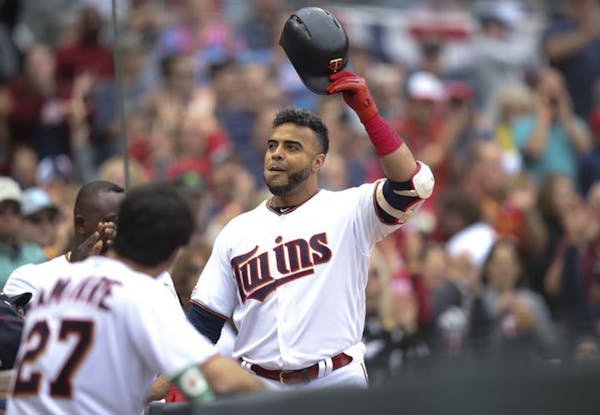After the Twins won the 1987 World Series, assistant general manager Bob Gebhard turned to Andy MacPhail and said something like: "We were just trying to get organized, and we won the thing."
With a newish front office, a new manager and pitching coach, and one of the best free-agent signings in franchise history, the 2019 Twins got organized. Now they have to try to figure out how to win the thing.
That will require more high-end pitching, more aggressive maneuvering, perhaps more spending, and a little more luck.
The Twins' lineup failed in the three-game sweep to the Yankees in the ALDS, but failed because of an anxious approach at the plate, not because a lack of talent.
The Twins' bullpen may again be a work in progress, but Taylor Rogers proved he can be a top closer, and Trevor May and Tyler Duffey emerged as legitimate late-game options. The Twins have enough arms to build a quality bullpen even if they don't add to their stable of relievers over the winter.
Luck? Two Twins officials mentioned that they "can't wait" to enter a postseason with their best players available to them. This year, they were missing Byron Buxton (perhaps their best player), Michael Pineda (their pitcher with the most positive experience in Yankee Stadium) and Sam Dyson (a quality reliever who could have helped in Games 1 or 2).
The logical place for the Twins to upgrade is the top and middle of the rotation. Which is like saying that a dozen NFL teams need a franchise quarterback. It's easy to identify the problem; it's difficult to solve it.
The Pohlads could simply outbid everyone in baseball for a high-priced ace. Not only is that unlikely, but it also may not be preferred by this front office, which likes to cite statistics proving that paying a high percentage of the payroll to one player is a losing strategy.
So how do the Twins build a rotation that will have a better chance to beat a team like the Yankees in the postseason?
Jose Berrios is a top of the rotation starter. Jake Odorizzi likely will try to capitalize on a strong season and an impressive playoff start to seek large long-term deal.
Brusdar Graterol, just 21, could become the Twins' ace as early as next season, but it may be imprudent to rely too heavily on someone so young. Jorge Alcala, 24, is talented but hasn't conquered Class AA yet.
The Twins have a strong roster of big-league position players with a number of excellent prospects on the way. The logical move would be trading a position player for a starting pitcher.
The Twins have Max Kepler and Jorge Polanco signed to long-term deals and are thrilled with their development. Buxton is viewed as perhaps the team's best all-around player. If Miguel Sano works this winter like he did last winter and stays healthy, he could produce 50 home runs.
Nelson Cruz and Marwin Gonzalez will be back, Luis Arraez will be the second baseman, and top prospects Royce Lewis, Alex Kirilloff and Trevor Larnach could be ready at some point next season.
The logical trading chip is Eddie Rosario.
Rosario is highly entertaining. He hits home runs. He provided many of the best moments of this season. He also played right field in the playoffs because the Twins view Gonzalez as a better outfielder so he played in the larger field in left. Rosario's numbers, aside from his home run (32) and RBI (109) totals, were underwhelming. His .300 on-base percentage is poor.
If baseball deadens the baseball next year, Rosario could turn into a corner outfielder with gap power who doesn't draw walks.
The problem with trading Rosario is that there may not be many general managers who want to give up value for such a player. But it only takes one.
The Twins have built their farm system to the point where they can afford to trade their cleanup hitter and another prospect or two for a starting pitcher, if they can find a taker.
Jim Souhan's podcast can be heard at TalkNorth.com. • On Twitter: @SouhanStrib. jsouhan@startribune.com
Souhan: Frazier family's Minnesota boxing pedigree spreads to Olympics

Souhan: Twins hitting coaches should get credit for team's turnaround

Souhan: Monte Kiffin should be in the Hall of Fame
Souhan: Here's why the Lynx passed on Angel Reese


